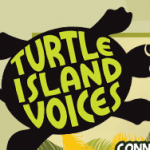A Resource for Curriculum Developers, Teachers and Administrators
In searching for ways to integrate Aboriginal perspectives in the existing curricula for my project, I happened to stumble upon this excellent resource. The goal of the document is to assist Manitoba’s curriculum developers and instructors in incorporating Aboriginal perspectives, cultural components, historical contributions and achievements in the classroom.
What I liked most about this article is that it touches on many topics such as residential schools, traditional ways of learning (oral tradition, spirituality, Medicine Wheel, and Elders), and ways to include traditional ways of knowing in the current curricula. In addition, it provides an extensive list of learning outcomes for multiple subjects for the different age groups as well as examples of how Aboriginal perspectives have been integrated in schools. One of the examples demonstrates multimedia was used as a means to bring awareness to Type II diabetes in Aboriginal peoples. Finally, the document presents a historical timeline of significant events for the Aboriginal peoples of Manitoba




